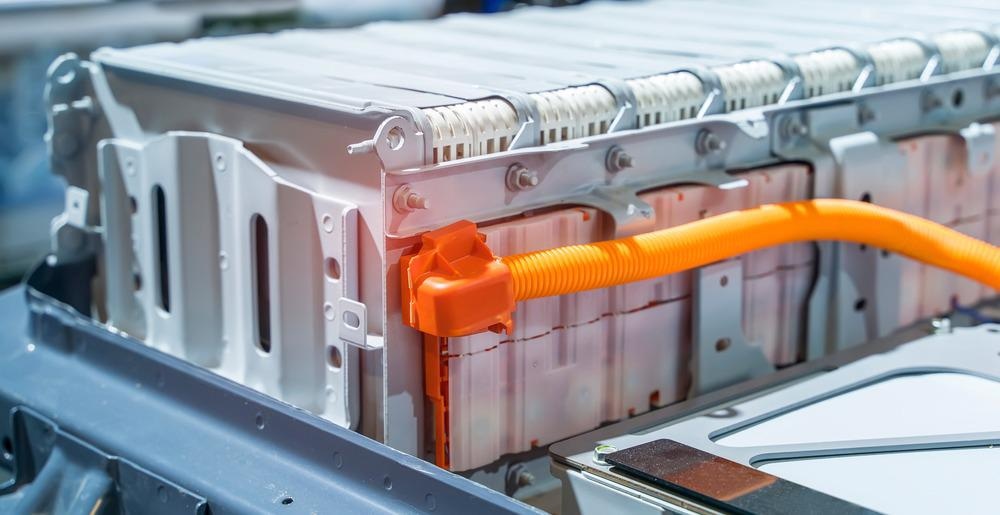The increased use of battery power is expected to play a major role in facilitating the shift from the world’s reliance on fossil fuels towards clean energy sources. This shift is essential in the fight to attain carbon goals to address climate change.

Image Credit: asharkyu/Shutterstock.com
Batteries present an opportunity to transform the transportation sector, which currently contributes significant amounts of carbon to the atmosphere. They also offer a solution to the intermittent energy produced by solar and wind generation, helping to make these green options more viable. However, batteries may not be the clean energy solution they seem at face value. Sourcing the materials, such as lithium, for batteries is creating an environmental issue.
The Environmental Impact of Lithium-Ion Batteries
Lithium-ion batteries use cathodes made of nickel and cobalt and are considered to have a significant environmental impact such as the depletion of resources, contribution to global warming, ecological toxicity, as well as impact on human health.
In 2016, protestors drew attention to a toxic chemical leak at the Ganzizhou Rongda Lithium mine that had destroyed the local ecosystem, resulting in dead fish floating in the Liqi river. Eyewitnesses reported dead cows and yak also flowing downstream from the mine following the third incident in seven years. After the second incident in 2013, the mine had been closed, only to be reopened in 2016 due to increased demand for batteries for smartphones and electric cars. Shortly after reopening, locals noticed the fish had begun dying again.
Lithium-ion batteries require huge supplies of cobalt. The mining of this rare metal is not environmentally or socially responsible, therefore, the use of lithium-ion batteries cannot be considered a green alternative to fossil fuels.
However, even amid these concerns, experts predict that lithium-ion batteries will play a significant role in the global clean-up of its energy sector. Tesla’s Model S vehicle runs on batteries that require around 12 kg of lithium, and the demand worldwide continues to increase as battery-fueled options become more popular.
The problem is that the energy sector may be replacing one environmentally detrimental method with another. Replacing fossil fuels with ‘clean’ energy fueled by lithium-ion batteries might reduce the carbon footprint associated with non-renewable energy but it switches them with the environmental impact of sourcing the vast amounts of lithium required as demand continues to grow exponentially. Scientists predict that we are heading for a mineral crisis which will have its own impact on the environment.
Increased Use of Lithium-Ion Batteries Does Not Reflect Threat to Environment
While the increased use of lithium-ion batteries presents a clear threat to the environment and is not a sustainable replacement for fossil-fueled energy generation, countries worldwide are committing to battery power as part of their carbon-neutrality strategies. President Joe Biden has made batteries a key component of the USA’s carbon-neutral initiatives, with hopes that increased domestic production will also help create jobs and reduce unemployment levels.
Lithium-ion batteries are the most used battery technology in the world today, and in spite of the significant environmental concerns surrounding them, their use looks set to continue to increase. Most of the electric vehicles being produced today use lithium-ion batteries, Tesla being one major consumer of such batteries. This presents a major environmental concern, given that the electric vehicle market is predicted to experience significant growth in the coming years as conventional vehicles are phased out of production to meet climate change goals.
In addition to the rising production of electric vehicles, which will continue to boost demand for lithium-ion batteries, the lifespan of these products remains relatively short. In just five years, the capacity of lithium-ion batteries reduces to 70-90%. This short lifespan indicates that there will be a further boost to demand for lithium-ion batteries to replace those in heavily used battery-powered products such as electric vehicles.
Producing Lithium from Sea Water
While lithium may not be the most problematic aspect of the future of clean energy, it still presents a significant environmental issue and undermines the switch from non-renewables to clean energy. Fortunately, scientists are devising ways to overcome the environmental impact of sourcing lithium. The latest research suggests that scientists may be able to produce lithium from seawater in the future.
There are roughly 180 billion tons of lithium in the world’s oceans. However, it exists in very dilute proportions, therefore, methods currently in development to extract this lithium have been very energy-intensive. Before lithium can be extracted from seawater in a way that is environmentally conscious and sustainable, a less energy-intensive method needs to be established. Research is underway and there is hope to find a solution in the coming years.
References and Further Reading
Service, R., 2020. Seawater could provide nearly unlimited amounts of critical battery material. Science. https://www.sciencemag.org/news/2020/07/seawater-could-provide-nearly-unlimited-amounts-critical-battery-material
The spiralling environmental cost of our lithium battery addiction. Amit Katwala. Wired. Available at: https://www.wired.co.uk/article/lithium-batteries-environment-impact
What Batteries Will Power The Future? Ariel Cohen. Forbes. Available at: https://www.forbes.com/sites/arielcohen/2021/02/11/what-batteries-will-power-the-future/?sh=b31203d41c0e
Disclaimer: The views expressed here are those of the author expressed in their private capacity and do not necessarily represent the views of AZoM.com Limited T/A AZoNetwork the owner and operator of this website. This disclaimer forms part of the Terms and conditions of use of this website.